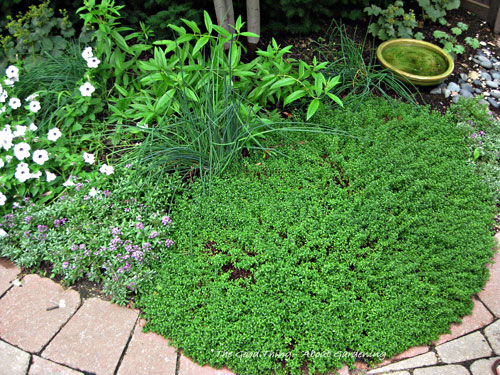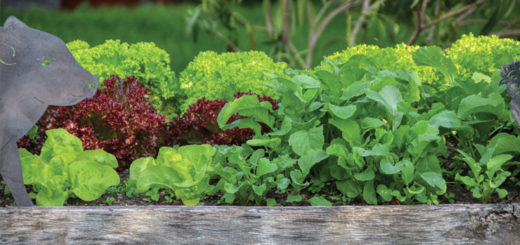Adding Tasty Edible Plants to Your Landscape
 Window boxes overflowing with blooms, decorative pots lining the driveway with striking colors, and even a flowering vine climbing up the mailbox – fall planting is a great opportunity to decorate the landscape and add edible plants to your garden.
Window boxes overflowing with blooms, decorative pots lining the driveway with striking colors, and even a flowering vine climbing up the mailbox – fall planting is a great opportunity to decorate the landscape and add edible plants to your garden.
The latest gardening trend is growing your own produce, so incorporate edible plants as a beautiful compliment to the typical annuals and perennials. This year, spice up the landscaping decor with some tasty options.
Edible plants – whether herbs, vegetables, fruits or flowers – add a creative variety of interest to your landscape, and also produce a delicious bounty for your dinner table come harvest time.
Here are some ideas to help incorporate edible plants into your landscaping:
* Decorate an arbor in the garden, along a walkway or near the house with grape vines. These vines can help shade an area and also can produce grapes good for eating, juicing, making into jams or jellies, or even wine. Different grapes thrive in different areas of the country, so research your region first before attempting to start some vines.
* Switch to edible flowers like nasturtium, violets, chamomile, dandelion, hollyhock, honeysuckle, and pansies in your window boxes and decorative pots. Do not eat flowers grown for ornamental purposes, instead, start edible flowers as seeds and grow them yourself. These flowers work great in salads, teas, summery drinks like sweetened tea, mocktails, and lemonade, and also can be crystallized to decorate cakes. To crystallize flowers, separate the flowers from the stem, and wash and dry the bloom. Heat up an equal parts water and sugar until the sugar dissolves, and the liquid becomes an amber color. Let the syrup cool. Take flower blooms and quickly dip the pedals into the liquid mixture, turn back over and let dry blossom face up. Stronger petals with form and shape work well.
* Mix an herb or two into container gardens. Lavender, rosemary, thyme, oregano and lemon grass are just a few that grow extremely well in containers, and mix attractively with other blooming flowers. Not only are the herbs edible, but also emit delicious scents when picked or touched, making a great choice for window boxes or path plantings.
* Pot a tomato plant right in the front yard. Or, the backyard. Tomatoes grow well in full sunlight, and are decorative when the vines drape along a trellis or arbor. Tomatoes also work well as a natural screen along a porch or patio. Also good for use on an arbor or trellis are cucumbers, smaller melons and squash, beans and peas. Inter-plant vines with containers or landscaping, and your small vegetable garden will get a pop of interest to make it stand out – and provide a great harvest for your family.
* Create a hedge with berries. Try blueberries, blackberries, raspberries and even gooseberries to make a unique hedge along the edge of your property. Just remember, your family will not be the only samplers of the fruits. Consider covering the hedge with netting to help keep birds from stealing all the berries.
As you are planning new edible gardens, stock up on all the materials needed to give these plants great growing power. Be sure to use a high quality potting mix when planting container gardens, such as Miracle-Gro Moisture Control Potting Mix or Miracle-Gro Organic Choice Potting Mix. For in-ground or raised bed gardens, nitrogen feeding for lush, vibrant plants. A 2- to 3-inch layer of one of these soils can be worked into existing beds for a great boost of organic matter to amend native soils each year. And do not forget to feed your plants throughout the growing season.
Combining beautiful landscaping with delicious foods to serve at dinner is sure to create many compliments – both from visitors enjoying the front and backyard views, and from dinner guests enjoying the produce harvest. Follow these tips and this year your garden will look good enough to eat.






